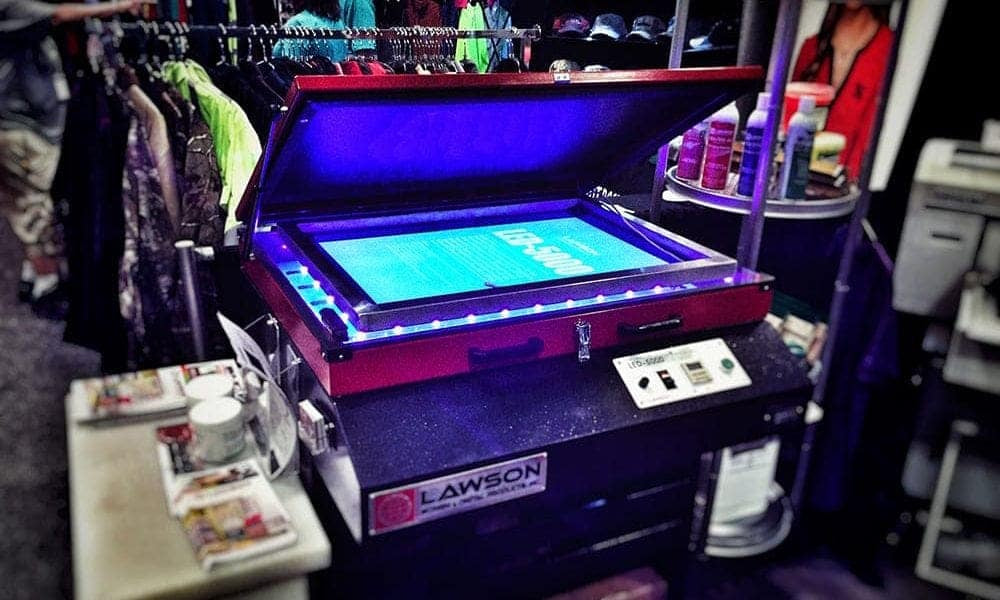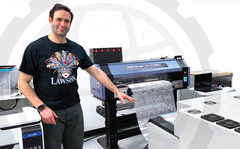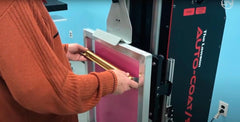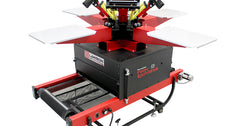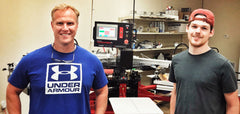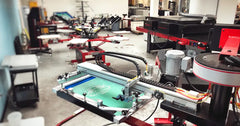Exposure Unit Basics: Understanding What an Exposure Unit Does
Exposing, or “burning,” a screen is one of the first major steps of the screen printing process. An exposure unit uses a light source to burn a screen that has been coated with emulsion to transfer artwork onto the screen and develop the image. This is how you transfer your art from the film positive onto your screen printing frame. Each color you print will need its own screen, so if you are printing a 3 color job, you will burn 3 different screens - one for each of the colors.
For some pro tips, check out this video for how to easily align your film positives.
Screen printers used to have a choice between metal halide and fluorescent tubes for what light source powered their exposure units. Today, those are considered old fashioned. Metal halide bulbs are expensive and consume a lot of energy. Fluorescent tubes are inefficient and lose their power over time. Any quality exposure unit on the market today uses LED lights.
LED light acts quickly and powerfully – reducing the time spent using your exposure unit. Lawson’s exposure units use LED bulbs to provide powerful and rapid UV light output. LED bulbs also have a years-long lifespan, requiring fewer replacements.
As with other steps in the screen printing process, having the right equipment for exposure will create the best screen prints.
How to Decide Between an Exposure Unit with a Vacuum and One Without
If you want a high quality screen print, you want a high quality screen printing exposure unit. Understanding the difference between a vacuum and compression exposure unit will make all the difference in your print quality. Vacuum Exposure Units
A vacuum exposure unit enables clear definition and high-resolution exposure in a screen print by using powerful vacuum force to create tight contact among the emulsion coated screen and the film positive, ensuring light gets in only where it is needed. The proprietary vacuum frame and blanket used in Lawson’s LED-5000 and Expo-LED vacuum exposure units features a black neoflex rubber-flex blanket that firmly resists tearing and pinholes while also being flexible enough to conform to contours, resulting in sharply defined images.
If you want to print fine lines and/or halftones, you must get an exposure unit with a vacuum system. Vacuum exposure units are the best choice for burning screens cleanly and printing image details, because the tight contact between the film positive and mesh ensures details and lines come through in the screen print. Without that tight seal between the film positive and mesh, the light will “creep” into your image. This makes your lines less straight and causes you to lose important details.
Compression Exposure Units
A compression exposure unit is a good choice if you are starting a new screen printing business on a limited budget and do not anticipate printing highly detailed images (at least right away). Although compression exposure units do not typically provide as much high definition as vacuum units, they tend to be the more economical option. If you will primarily be using spot color print technique to print items like logos, block text, and line art, a compression exposure unit may satisfy your needs.
Compression units use a weighted cover that compresses the screen, film, and emulsion to create contact between the mesh and the film positive. You may need to apply force or place weight to ensure effective compression, depending on the unit.
Understanding Your Screen Printing Business Needs to Make the Best Decision
When deciding on which exposure unit to buy, you will need to consider factors including the space available in your darkroom, budget, and the level of screen printing you will be doing.
Lawson Screen & Digital Products offers several exposure unit options, including both vacuum and compression exposure units, for flexibility and customization. If you have limited darkroom space and are just starting out, you might choose an easy compact unit (such as the Expo-NV Exposure Unit), to maximize your space. For the more sophisticated business with complex needs, an exposure unit with programming options that can be customized for each printing job (such as the LED-5000 Screen Printing Exposure Unit) will ensure the highest quality prints every time. Lawson also offers exposure units tailored to computer-to-screen printing (such as the LED-5000 Vertical CTS).
Lawson Screen & Digital Products manufactures a full line of high quality exposure units that are perfect for all screen printing projects. All of Lawson’s exposure units are engineered and made in the U.S.A. Reach out to a Lawson representative with any questions about choosing your new exposure unit.

